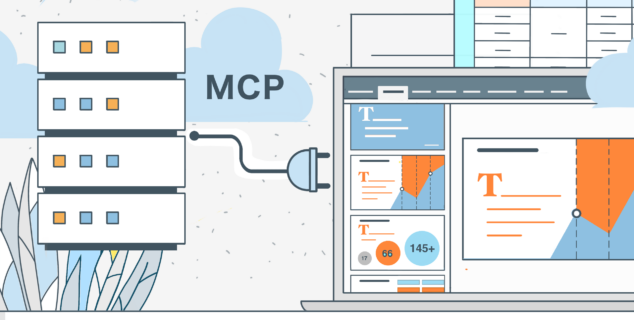Best document editing software to try in 2025
Document editors are still essential for individuals and organizations. This year, demand for a speedy and feature-rich document editor is stronger than ever. In this article, discover the best document editing software that promises enhanced features, seamless collaboration, and an optimized editing experience to empower your workflow in the year ahead.

What is a document editor?
A document editor is a software or tool designed to create, modify, and format electronic documents. Document editing software provides users with a platform to enter, edit, and design content. Document editors also enable sharing and editing of documents between users, increasing productivity and streamlining workflows in teams and organizations.
Key features of the software to edit documents include:
- Text Formatting. To modify the appearance of text, users can employ formatting options, including font styles, sizes, colors, and alignment.
- Inserting images and objects. Users can embed images, charts, tables, and other multimedia elements into their documents to enhance content.
- Templates. Document editors often provide pre-designed templates for common document types that serve as a base for creating the document, simplifying the creation process and providing a common appearance.
- Collaboration. Various modern document editing software provide collaborative functionality that enables simultaneous editing by multiple users. Real-time editing, commenting, and sharing features enhance team collaboration and communication.
- Export and Import. For printing or sharing, documents can be exported in different file formats. Additionally, document importation from various file formats is a prevalent function.
What document editing software features are important in 2025?
The choice of the best document editor depends on personal requirements, capabilities, operating system, etc. However, there are common trends for all document editors that will be useful in working with documents. Here are some features of document editing software.
Collaboration. This trend is not new, but relevant when it comes to a team working on a project or a company department working on document management. Today, document editing software needs to prioritize advanced collaboration tools such as file sharing with different access rights, real-time collaboration, revision, document combination and comparison, and communication via chat or videoconferencing.
Privacy and security. Another trend that remains in 2025 is crucial for companies that handle sensitive data. Users will prioritize protecting their sensitive information and ensuring that their documents are secure from unauthorized access or data breaches with open-source solutions. Document editing software should also provide options for data encryption and user authentication.
AI features. AI-powered functionality, such as grammar checking, content suggestions, smart automation of repetitive tasks, and natural language processing are crucial in document editing software. These features enable seamless collaboration, automated formatting, and intelligent suggestions, significantly enhancing productivity and efficiency for users.
Now that we know about document editors and their top features in 2025, let’s have a look at the options for the best document tools that might work for you.
Best document editors
1. ONLYOFFICE Document Editor

ONLYOFFICE Document Editor lets you manage fonts and styles, format text, adjust line and paragraph spacing, insert headers and footers, and customize page layout to prepare documents for publication. You can also create informative text with images, as well as customizable charts, autotemplates and tables, Text Art, SmartArt graphics, equations, capitalization, and more. Editors offer hand-drawing with pen or marker.
It supports all popular formats: DOC, DOCX, ODT, TXT, HTML, etc. PDF and XPS can be converted to DOCX for further editing. In addition, documents can be saved in PDF, EPUB, JPG, and PNG formats.
The functionality can be extended by third-party services using plug-ins. For example, you can translate and edit texts with Google Translator, DeepL, and LanguageTool, build complex diagrams with Draw.io, create a bibliography with Zotero or Mendeley, and dictate texts by voice with Speech Input.
The integrated AI assistant in the ONLYOFFICE Document Editor is one of its advantages. It allows you to define terms, produce code snippets, generate paragraphs, and create summaries. The AI assistant operates directly within the editing interface and allow to connect any AI model to your choice.
Pros: User-friendly interface, MS format compatibility, open source, document access control, AI-integration, real-time collaboration.
Cons: Resource intensive, long learning curve.
Best for real-time document editing within a team, and content creation using AI features.
ONLYOFFICE is available as a desktop app for Windows, macOS, and Linux or in the cloud with file storage space and collaborative features:
TRY IN THE CLOUD GET DESKTOP EDITORS
2. Google Docs

Google Docs is one of the best online document editor. The user-friendly interface and collaborative features of Google Docs have made it a popular choice among online document editors. It is perfect for team collaborations because it enables numerous users to work on the same document at once. In addition, Google Docs provides version history and automated saving, guaranteeing that no modifications are lost and making earlier versions of the work easily accessible. Convenience and accessibility are improved by its interaction with other Google services, such as cloud storage via Google Drive.
Pros: collaboration and real-time editing, version history and revision tracking, cloud-based access, integration with Google services.
Cons: limited offline functionality, security and privacy concerns, formatting challenges.
Best for simple document editing and file sharing.
3. Microsoft Word

Microsoft Word continues to be one of the top document editors in 2024, offering a wide range of features and functionalities. It is a well-liked solution for both amateurs and experts due to its versatile file format compatibility, numerous formatting options, and user-friendly interface. Additionally, smooth collaboration and effective workflow management are made possible by Microsoft Word’s interface with other Microsoft Office programs.
Pros: rich formatting options, customizable templates, integration with Microsoft Office suite, offline access, automation with macros, password protection, and encryption.
Cons: cost, platform dependency, limited collaboration in offline mode.
Best for professional document editing on desktop.
4. LibreOffice Writer

LibreOffice Writer is a free and open-source product that provides word processing and can be considered a good Word alternative. It supports .doc and .docx file formats and has all the tools that a user accustomed to Microsoft Word needs for word processing. It offers spelling and grammar checking, the ability to export to PDF and EPUB formats, auto-correct and auto-complete features, and many document templates.
LibreOffice is available in desktop editors for Windows, Linux, and macOS, but doesn’t provide an online editor. In addition to the text editor, LibreOffice also offers tools: Calc, Impress, Draw, Base, Math, and Charts.
Pros: open source, rich feature set, regular updates, customizable interface.
Cons: user interface design, compatibility challenges, limited collaboration features.
Best for users who prioritize open-source solutions and flexibility.
5. WPS Office Writer

WPS Office Writer is expected to maintain its position as one of the top document editors in 2024 due to its user-friendly interface and comprehensive features. With its ability to seamlessly integrate with other office applications and support multiple file formats, it offers a versatile solution for users across various industries. Additionally, WPS Office Writer’s continuous updates and improvements ensure that it stays ahead of the competition and meets the evolving needs of its users.
Pros: Microsoft Office compatibility (DOCX, XLSX, PPTX), user-friendly interface, PDF conversion, built-in templates
Cons: ads in free version, limited collaboration features, privacy concerns.
Best for document editing out of Microsoft Office.
6. Zoho Writer

Zoho Writer is an online document editor that offers a robust set of tools for both personal and team-based document editing. It stands out with its collaborative features, such as live chat, task management, and document sharing, making it perfect for businesses and teams. Zoho Writer integrates seamlessly with other Zoho applications and supports a variety of file formats, including DOCX, PDF, and HTML. It also offers offline editing options, making it versatile for users who need to work without an internet connection.
Pros: Real-time collaboration, cloud-based access, integration with Zoho apps, offline editing, multiple export options.
Cons: Limited template options, less intuitive interface compared to other tools, subscription required for premium features.
Best for teams looking for seamless integration with other business tools.
7. Apple Pages

Apple Pages is a powerful word processor that comes pre-installed on macOS and iOS devices. It offers a range of templates, a clean interface, and excellent integration with other Apple software like iCloud and Keynote. Apple Pages supports various document formats, including DOCX, PDF, and EPUB, and allows for easy collaboration with real-time editing through iCloud. It also provides features for creating rich documents with images, charts, and tables, making it a great option for creative professionals or those embedded in the Apple ecosystem.
Pros: Free with Apple devices, intuitive interface, seamless integration with iCloud, attractive templates.
Cons: Limited compatibility with non-Apple devices, fewer advanced features compared to competitors, less extensive formatting options.
Best for Mac and iOS users who prefer a simple and elegant document editing tool.
Summary
When choosing a document editor in 2025, consider factors such as features, functionality, collaboration capabilities, format compatibility, and cross-platform. If you work in a team, real-time collaboration features are essential for frequent collaboration. Ensure compatibility with file formats and good integration with other tools. Evaluate security features, including encryption and secure login methods. Consider cost and pricing structure, user interface, and the software vendor’s willingness to evolve further.
Create your free ONLYOFFICE account
View, edit and collaborate on docs, sheets, slides, forms, and PDF files online.


